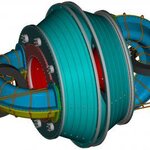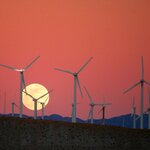Energy

Professor Marie-Pierre Laborie of the University of Freiburg and professors Antonio Pizzi and Alain Celzard from the French Université de Lorraine bagged almost $20,000 in prize money and the distinction of being a "German High Tech Champion" for developing "Biofoambark", a hard foam derived from bark extract that can be used as insulating material for homes. They produce the hard foams out of tannin, a compound found in tree bark that is typically left over as a waste product in the lumber industry. Since the foams have good insulating and flame resistant properties, they will be…

Which is the better use for a plot of land: growing crops to feed nations or growing crops to power them with biofuel? The answer to this question is, perhaps not surprisingly, complex and turns on the definition of “surplus” land, or idle, marginal spaces. Now, an interdisciplinary group of researchers from Europe and the US has decided to nail these concepts.
Despite the heated “food versus fuel” debates, researchers noted that there is no common language or guidelines that brings together this emerging field. Moreover, no one seemed to agree on what, exactly, defines surplus land.
There…

Fusion is the super-clean energy we would be thinking about if government-controlled energy science were about the best long-term solutions and not political pet projects - alas, its share of the $72 billion spent on alternate energy the last three years is negligible.
But something is better than nothing and some recent research revealed at the International Atomic Energy Association's Fusion Energy Conference in San Diego may be worth getting excited about.
You've all heard of fusion and likely give it a bad rap, for good reason. If you lump it in with the cold fusion nonsense…

Solar cells can convert up to three-quarters of the energy contained in the Sun‘s spectrum into electricity, yet the infrared spectrum is entirely lost in standard solar cells.
Around a quarter of the Sun’s spectrum is made up of infrared radiation which cannot be converted by standard solar cells; that heat radiation is lost. One way to overcome it is to use black silicon, a material that absorbs nearly all of the sunlight that hits it, including infrared radiation, and converts it into electricity. But how is this material produced?
In normal silicon, infrared light does not have…

Hydraulic fracturing technology, called fracking, has been around since the 1940s but has recently gained attention as the energy industry expanded cleaner natural gas production.
The inaugural Energy Census from business intelligence company Polecat says it is a big topic, with energy writers noting that CO2 emissions from energy have plummeted and coal emissions have gone even farther back in time, to the days of the first Reagan administration. Meanwhile, detractors claim it causes headaches and cancer (cancer has been the go-to disease for everything since Rachel Carson made up a scare…

Cutting carbon dioxide emissions is not easy; it requires a buy-in from developing nations who have coal and want a better life also, or a greater implementation of natural gas. One alternative idea is to transport materials into the stratosphere to reduce the amount of sunlight hitting Earth and therefore reduce the effects of global climate change.
A new paper says that the basic technology currently exists and could be assembled and implemented in a number of different forms for less than $5 billion a year - a tiny fraction of the amount that cutting emissions costs. Put into context, the…
Americans learned this week that the leader of the free world likes to brew his own “superb” beer. The Washington Post reported that President Obama likes microbrews “so much so that he bought a beer-making kit (with personal funds) for the White House.”
Now the White House can take the next step and slash its electricity bill, too.
Breweries produce two to three pints of waste water for each pint of beer. The water is rich in yeast, sugar and other favorite bacteria food. When microbes feast on it inside special tanks called anaerobic digesters, they produce methane, the main component of…

We’ve long depended on coal-fired and natural gas power plants to convert chemical fuel into electricity. Now, scientists have found a way to convert electricity into a fuel using excess power from renewables like wind and solar.
Scientists from Stanford and Pennsylvania State universities have discovered a process to convert electricity into methane, the main constituent of natural gas, using microbes. The fuel is carbon neutral and can use the excess electricity from renewable sources.
“In a sense, it’s the Holy Grail,” says Alfred Spormann, a professor of chemical, civil and environmental…

Photosynthesis is conversion of light energy into chemical energy utilizing Carbon di oxide, light energy, chlorophyll ( LHC II. PS II and LHC I PS I and electron transport chain ) along with water and generating ATP, reducing NADP+ to NADPH + H+ and photolysis of water with release of Oxygen as by product. This reaction takes place in light and is termed as “Light reaction”. C3 reduction or Calvin cycle CO2 → C3 → C6 (Melvin Calvin 1950s, Nobel prize in 1961) was termed “dark reaction”.
Although Calvin Cycle’ or ‘Carbon Reactions Pathway do not Require Light energy to…
China, as you would expect with all those people, is the world's biggest energy guzzler. They are also the world's biggest polluter.
Nothing wrong with being the biggest energy user, it would be elitist to declare a hard stop on air conditioners now that Chinese people can afford them, but with 75% of that energy coming from coal, which is cheap but dirtier than natural gas, they would like to see about ways to get cleaner. Solar is fine for selling to the West, who happily subsidize it to make Chinese companies rich, but for their own needs fracking is probably the way to go.…